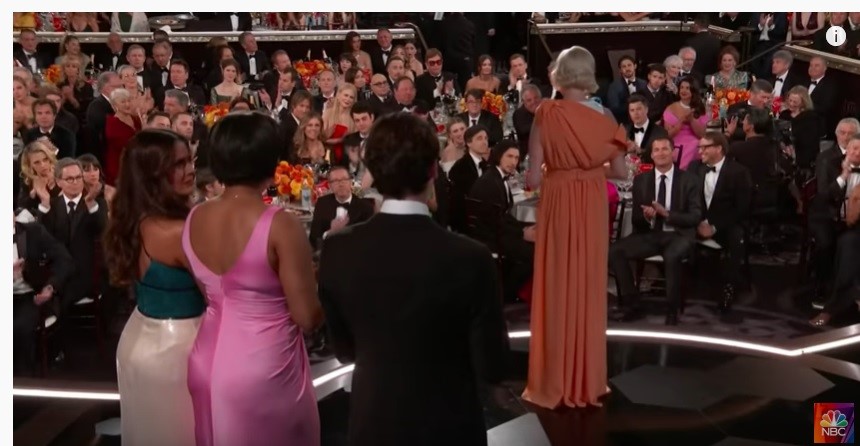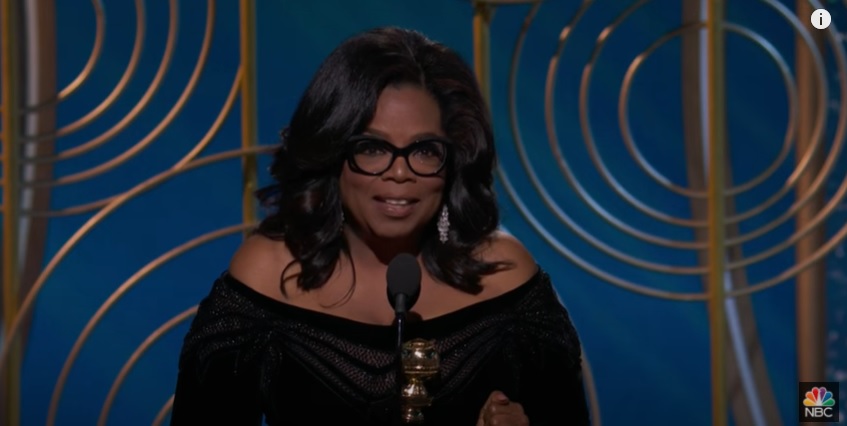Michelle Williams Delivers in Golden Globes Speech

Actor Michelle Williams accepts her award at the 77th annual Golden Globe Awards ceremony last night. YouTube screenshot
From time to time, acceptance speeches at award shows offer important lessons of what to do and what not to do when stepping up to the mic. At last night’s Golden Globe Awards ceremony, actress Michelle Williams showed what it looks like when you get it right, by offering a personal and powerful speech about a woman’s right to choose.
She did this by deftly balancing gratitude for the award, which honored her performance in FX’s Fosse/Verdon, even as she urged others to join her cause.
The techniques she employed to make a more effective speech are ones you can use, too, to be more successful during your turn at the mic. We look at five ways she turned what could have been a rather ho-hum moment into one that has people talking.
1. She gets right to the point.
Instead of leading up with a long list of thank yous – which rarely draws an audience’s interest – she gets to the most important ones in 8 seconds and then quickly pivots to an opening that is engaging and reveals the main point of her speech – all in 30 seconds. As she says:
“Thank you so much. First of all to my Fosse/Verdon family and the Hollywood Foreign Press Association, when you put this in someone’s hands, you are acknowledging the choices that they make as an actor, moment by moment, scene by scene, day by day, but you are also acknowledging the choices they make as a person. The education they pursue. The training they sought and the hours they put in. I am grateful for the acknowledgement of the choices I have made. And, I am also grateful to have lived in a moment in our society where choice exists.”
2. She seeks common ground.
One of the more effective ways to be heard and to persuade your audience is to focus on areas of shared agreement. Your audience may not agree with everything you have to say, but may be more likely to hear you if you show them where you both can agree.
She does this by leaving space for people who may disagree with her particular feelings about women’s choice, but who can potentially agree with her larger point that, as a woman, you should have the right to make them.
This is how she does that:
“I know my choices may look different from yours. But, thank God, or whomever you pray too, that we live in a country founded on the principle that I am free to live by my faith and you are free to live by yours.”
3. She uses words and literary devices effectively.
Concrete and descriptive language, as well as certain literary devices, such as metaphors, can help an audience to remember and retain your message. Williams does this in particular when she talks about her life’s journey and links it to her overarching message.
She talks about living a life of her own making and “not just a series of events that happened to me.”
She helps cut through the clutter by describing her life as one that she can look back on and “recognize my handwriting all over, sometimes messy and scrawling and sometimes careful and precise, but one that I had carved with my own hand. And I wouldn’t have been able to do this without employing a woman’s right to choose. “
4. She offers a definitive call to action.
Instead of platitudes and relying on hope that people will infer her meaning, Williams offers a direct and fresh call to action that unequivocally offers the audience an understanding of what she hopes they will do concerning women’s reproductive rights.
Here it is:
“So, women 18 to 118, when it is time to vote, please do so in your self-interest. It’s what men have been doing for years, which is why the world looks so much like them. But don’t forget we are the largest voting body in the country. Let’s make it look more like us.”
5. She connects with the audience.
While Williams undoubtedly found friendly reception to her message from others in the crowd who agreed with her views, it appeared as if she had the attention of everyone in the room. When you own your words, and your delivery and demeanor reflect that, you can command a stage – and you don’t just have to be an actor to do that.


